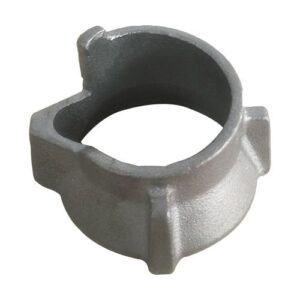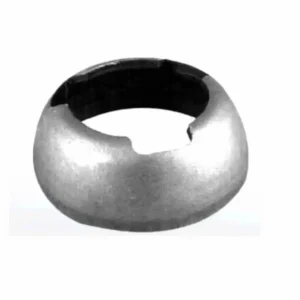Panel Special Steel
Panel Special Steel
Panel Special Steel Description
- Purpose: The Panel Special Steel system is designed for use in formwork applications to shape and support concrete structures during the pouring and curing processes. It provides a robust and reusable solution for forming vertical elements like walls, columns, and beams with a high-quality finish.
- Material: Made from high-strength steel, the panels are constructed to withstand the pressures exerted by wet concrete. The steel is often galvanized or powder-coated to enhance durability and prevent corrosion, ensuring long-term usage in various construction environments.
- Design: The panels are typically framed with reinforced steel sections to prevent bending or warping. They come in different sizes and shapes to suit a range of construction needs. The surface of the panels is usually smooth to ensure a quality finish on the concrete surface.
- Modularity: The panels can be connected using various clamps, bolts, and other fastening systems to form a continuous surface. This modular nature allows for flexibility in assembling the panels to match different project specifications, including curved or angled structures.
- Reusability: Designed for repeated use, the Panel Special Steel system is both cost-effective and environmentally friendly, as it can be employed in multiple construction projects over time.
Components of the Panel Special Steel System
Steel Panels:
- The primary component of the system, providing a rigid formwork surface.
- Constructed from high-strength steel plates with reinforced edges to maintain shape and alignment under the pressure of concrete.
- Typically includes slots, holes, or grooves for attaching clamps, bolts, and other accessories.
Reinforcing Frame:
- The steel panels are reinforced with steel frames, usually welded around the edges, to enhance strength and prevent deformation.
- These frames often have slots for connecting other panels or accessories, allowing for flexible assembly.
Connecting Elements:
- Clamps: Used to join panels together securely, ensuring a tight and stable formwork structure.
- Bolts and Nuts: Facilitate the secure attachment of panels, reinforcing frames, and support elements.
Accessories:
- Tie Rods and Wing Nuts: Used to hold the panels in place and resist the pressure exerted by the concrete.
- Lifting Eyes: Installed on the panels to aid in lifting and positioning during setup and removal.
Technical Specifications
- Material:
- Constructed from high-strength steel, often with a galvanized or powder-coated finish for enhanced durability and resistance to corrosion.
- Panel Sizes:
- The panels come in a range of standard sizes to accommodate different construction requirements. Common dimensions include:
- Height: Ranges from 1.0 m to 3.0 m.
- Width: Typically varies from 0.3 m to 1.2 m.
- Custom sizes may be available depending on the manufacturer.
- The panels come in a range of standard sizes to accommodate different construction requirements. Common dimensions include:
- Panel Thickness:
- Generally ranges between 2 mm to 5 mm, providing sufficient strength to withstand the pressure of concrete while maintaining a smooth surface finish.
- Load Capacity:
- Designed to handle the high-pressure loads exerted by wet concrete during pouring. The load capacity varies based on the panel’s size, thickness, and reinforcement.
- Reinforced panels can withstand concrete pressures of up to 80 kN/m² or more, depending on their specifications.
- Weight:
- The weight of individual panels varies based on their size and thickness, generally ranging from 20 kg to over 50 kg per panel.
- Surface Finish:
- The front face of the panel is usually smooth or treated to ensure a high-quality finish on the concrete surface.
- The steel is often coated or galvanized to resist wear and extend the panel's lifespan through multiple uses.
Advantages of Using Panel Special Steel
- High Strength: The steel construction provides exceptional load-bearing capacity, making it suitable for large and complex concrete structures.
- Reusable: Designed for multiple uses, the panels offer a cost-effective solution for construction companies, reducing the need for single-use formwork materials.
- Precise Alignment: Reinforced frames and secure connectors ensure precise alignment of the panels, resulting in accurate concrete dimensions and a smooth finish.
- Versatility: The modular nature of the panels allows them to be used in various configurations, accommodating different shapes, angles, and sizes of structures.
Applications
- Wall Formwork: Used to create formwork for concrete walls of different heights and thicknesses.
- Column Formwork: Suitable for forming square, rectangular, or even curved concrete columns.
- Beam and Slab Formwork: Employed as part of the formwork system to support horizontal concrete elements like beams and slabs.
Panel Special Steel Description
- Purpose: The Panel Special Steel system is designed for use in formwork applications to shape and support concrete structures during the pouring and curing processes. It provides a robust and reusable solution for forming vertical elements like walls, columns, and beams with a high-quality finish.
- Material: Made from high-strength steel, the panels are constructed to withstand the pressures exerted by wet concrete. The steel is often galvanized or powder-coated to enhance durability and prevent corrosion, ensuring long-term usage in various construction environments.
- Design: The panels are typically framed with reinforced steel sections to prevent bending or warping. They come in different sizes and shapes to suit a range of construction needs. The surface of the panels is usually smooth to ensure a quality finish on the concrete surface.
- Modularity: The panels can be connected using various clamps, bolts, and other fastening systems to form a continuous surface. This modular nature allows for flexibility in assembling the panels to match different project specifications, including curved or angled structures.
- Reusability: Designed for repeated use, the Panel Special Steel system is both cost-effective and environmentally friendly, as it can be employed in multiple construction projects over time.
Components of the Panel Special Steel System
Steel Panels:
- The primary component of the system, providing a rigid formwork surface.
- Constructed from high-strength steel plates with reinforced edges to maintain shape and alignment under the pressure of concrete.
- Typically includes slots, holes, or grooves for attaching clamps, bolts, and other accessories.
Reinforcing Frame:
- The steel panels are reinforced with steel frames, usually welded around the edges, to enhance strength and prevent deformation.
- These frames often have slots for connecting other panels or accessories, allowing for flexible assembly.
Connecting Elements:
- Clamps: Used to join panels together securely, ensuring a tight and stable formwork structure.
- Bolts and Nuts: Facilitate the secure attachment of panels, reinforcing frames, and support elements.
Accessories:
- Tie Rods and Wing Nuts: Used to hold the panels in place and resist the pressure exerted by the concrete.
- Lifting Eyes: Installed on the panels to aid in lifting and positioning during setup and removal.
Technical Specifications
- Material:
- Constructed from high-strength steel, often with a galvanized or powder-coated finish for enhanced durability and resistance to corrosion.
- Panel Sizes:
- The panels come in a range of standard sizes to accommodate different construction requirements. Common dimensions include:
- Height: Ranges from 1.0 m to 3.0 m.
- Width: Typically varies from 0.3 m to 1.2 m.
- Custom sizes may be available depending on the manufacturer.
- The panels come in a range of standard sizes to accommodate different construction requirements. Common dimensions include:
- Panel Thickness:
- Generally ranges between 2 mm to 5 mm, providing sufficient strength to withstand the pressure of concrete while maintaining a smooth surface finish.
- Load Capacity:
- Designed to handle the high-pressure loads exerted by wet concrete during pouring. The load capacity varies based on the panel’s size, thickness, and reinforcement.
- Reinforced panels can withstand concrete pressures of up to 80 kN/m² or more, depending on their specifications.
- Weight:
- The weight of individual panels varies based on their size and thickness, generally ranging from 20 kg to over 50 kg per panel.
- Surface Finish:
- The front face of the panel is usually smooth or treated to ensure a high-quality finish on the concrete surface.
- The steel is often coated or galvanized to resist wear and extend the panel's lifespan through multiple uses.
Advantages of Using Panel Special Steel
- High Strength: The steel construction provides exceptional load-bearing capacity, making it suitable for large and complex concrete structures.
- Reusable: Designed for multiple uses, the panels offer a cost-effective solution for construction companies, reducing the need for single-use formwork materials.
- Precise Alignment: Reinforced frames and secure connectors ensure precise alignment of the panels, resulting in accurate concrete dimensions and a smooth finish.
- Versatility: The modular nature of the panels allows them to be used in various configurations, accommodating different shapes, angles, and sizes of structures.
Applications
- Wall Formwork: Used to create formwork for concrete walls of different heights and thicknesses.
- Column Formwork: Suitable for forming square, rectangular, or even curved concrete columns.
- Beam and Slab Formwork: Employed as part of the formwork system to support horizontal concrete elements like beams and slabs.
Included Products
-
Cuplock System
Top Cup
60.00 EGPOriginal price was: 60.00 EGP.56.00 EGPCurrent price is: 56.00 EGP. Add to cart




